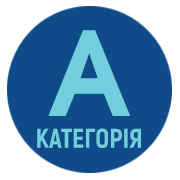WHITE RATS’ THYROID GLAND MORPHOLOGICAL STATE AFTER HYPEROSMOLAR SOLUTIONS OF LACTOPROTEIN WITH SORBITOL OR HAES-LX-5% ADMINISTRATION
DOI:
https://doi.org/10.32782/2226-2008-2023-4-4Keywords:
thyroid gland, thermal damage, colloidal hyperosmolar solution of lactoprotein with sorbitol, HAES-LX-5%, pathogenetically justified pharmacocorrectionAbstract
Burn injuries are among the most common and severe diseases in people, second only to traffic injuries. The thyroid gland is one of the first to be affected by high temperature altering effect. When investigating the issue of thyroid gland thermal damage pharmacological correction, we proceed from the classical fundamental concept regarding its pathogenetic validity. The aim of the work is to study histological and ultrastructural changes in the thyroid gland of rats under hyperosmolar solutions of lactoprotein with sorbitol or HAES-LX-5% administration. Materials and methods. Intact rats were injected with a colloidal hyperosmolar solution of lactoprotein with sorbitol and HAES-LX-5% into the lower vena cava. On the 1st, 3rd, 7th, 14th, 21st and 30th days of the study of the thyroid gland, both histological preparations and electronograms were studied following the generally accepted method. Results and discussion. Animals’ thyroid gland microscopic investigations during the entire period of observation after the hyperosmolar solutions of lactoprotein with sorbitol, or HAES-LX-5% seven-day administration, showed the organ structure preservation without signs of pathological changes development. The author considers it methodologically correct and experimentally justified from pathophysiological point of view to conduct further series of studies focused on colloidal hyperosmolar solutions of lactoprotein with sorbitol and HAES-LX-5% testing protective effects under thyroid gland burning.
References
Military field surgery. Red. YaL Zarutsʹkyy, VYa Bilyy. Kyyiv: FENIKS. 2018. 544 p. (in Ukrainian). Available from: https://repo.odmu.edu.ua/xmlui/handle/123456789/1333.
Jeschke MG, Gauglitz GG, Kulp GA, Finnerty CC, Williams FN, Kraft R, Suman OE, et al. Long-Term Persistance of the Pathophysiologic Response to Severe Burn Injury. PLoS One. 2011; 6(7): e21245. DOI: 10.1371/journal.pone.0021245.
Hughes A, Almeland SK, Leclerc T, Ogura T, Hayashi M, Mills J-A, Norton I, Potokar T. Recommendations for burns care in mass casualty incidents: WHO Emergency Medical Teams Technical Working Group on Burns (WHO TWGB) 2017-2020. Burns. 2021; 47(2): 349–370. DOI: 10.1016/j.burns.2020.07.001.
Jeschke MG, van Baar ME, Choudhry MA, Chung KK, Gibran NS, Logsetty S. Burn injury. Nat Rev Dis Primers. 2020; 6(1): 11. DOI: 10.1038/s41572-020-0145-5.
Kilburn N, Dheansa B. Socioeconomic impact of children’s burns-a pilot study. Burns J Int Soc Burn Inj. 2014; 40: 1615–1623. DOI: 10.1016/j.burns.2014.03.006.
Smolle C, Cambiaso-Daniel J, Forbes AA, Wurzer P, Hundeshagen G, Branski LK, Huss F, Kamolz LP. Recent trends in burn epidemiology worldwide: A systematic review. Burns. 2017; 43(2), 249–257. DOI: 10.1016/j.burns.2016.08.013.
Moroz VM, Shandra OA, Vastyanov RS, Yoltukhivsky MV, Omelchenko OD. Physiology. Vinnytsia: Nova Knyha. 2016. 722 p. Available from: https://repo.odmu.edu.ua/xmlui/handle/123456789/10327?locale-attribute=en.
Tiron OI, Vastyanov RS, Shapovalov VYu, Yatsyna OI, Kurtova MM. Pathophysiological mechanisms of thyroid gland hormonal dysregulation during experimental thermal exposure. World of Medicine and Biology. 2022; 4(82): 246–251. DOI: 10.26724/2079-8334-2022-4-82-246-251.
Tiron OI, Herasimenko OS, Nikogosyan LR, Nescoromna NV, Merlich SV, Rusalkina LG, Vastyanov MR. White rats thyroid gland morphological changes throughout the experimental thermal injury in conditions of lactoprotein with sorbitol hyperosmolar solutions administration. World of Medicine and Biology. 2023; 1(83): 233-238. DOI: 10.26724/2079-8334-2023-1-83-233-238.
Horalʹsʹkyy LP, Khomych VT, Kononsʹkyy OI. Basics of histological technique and morphofunctional research methods in normal and pathological conditions. Zhytomyr: ZhNAEU. 2019. 286 p. (in Ukrainian).
Yakovleva OO, Ocheretnyuk AO, Palamarchuk OV. Dynamics of correction of histological changes in the lungs of rats when using infusion solutions – HAES-LX-5% and lactoprotein with sorbitol in the conditions of burn disease. Ukrainian Journal of Hematology and Transfusion. 2012; 4: 426–428 (in Ukrainian).
Tiron ОІ. The influence of lactoprotein with sorbitol and HAEX-LX 5% on thyroid gland hormonal activity changes after its thermal injury. Actual problems of transport medicine. 2023; 3(73): 180–191 (in Ukrainian). DOI: http://dx.doi.org/10.5281/zenodo.8254545.
Semenenko OM, Yakovleva OO, Semenenko SI. comparison of therapeutic effect solutions HAES-LX-5% and laktoproteyinu with sorbitol in conditions of burn disease changes of bioenergetic processes in the kidney. Clinical and experimental pathology. 2015; 14(2): 180–184 (in Ukrainian).
Nielson CB, Duethman NC, Howard JM, Moncure M, Wood JG. Burns: Pathophysiology of Systemic Complications and Current Management. J Burn Care Res. 2017; 38(1): e469–e481. DOI: 10.1097/BCR.0000000000000355.
Cherkasov VG, Dzevulska ІV, Cherkasov EV, Kaminsky RF, Pastukhova VA, Kovalchuk ОІ, Trofimenko YuYu. Influence of HAES-LX-5% infusion solution on the DNA content of endocrine glands cells against the background of thermal burn of skin in rats. World of Medicine and Biology. 2017; 4(62), 168–173. DOI: 10.26724/2079-8334-2017-4-62-168-173.
Gavryluk AO, Galunko GM, Chereshniuk IL, Tikholaz VO, Cherkasov EV, Dzevulska ІV, Kovalchuk ОІ. Indicators cell cycle and DNA fragmentation in cells of small intestine mucosa 14, 21 and 30 days after skin burns on the background of preliminary infusion of solution lactoprotein with sorbitol or HAES-LX 5%. World of Medicine and Biology. 2018; 1(63), 104–108. DOI: 10.26724/2079-8334-2017-4-62-104-108.






